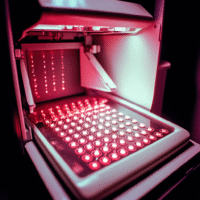Understanding the Study
This study looked at three different ways to collect samples from lymph nodes in the chest using a technique called Endobronchial Ultrasound (EBUS). This is important for diagnosing conditions related to swollen lymph nodes.
Main Findings
Researchers compared:
- Slow-pull capillary sampling
- Traditional negative-pressure aspiration
- Non-negative-pressure capillary sampling
The results showed:
- All three methods had high accuracy, meaning they were good at diagnosing issues with the lymph nodes.
- No significant differences in performance among the three techniques.
- There was a low risk of bleeding and no issues with blood contamination in the samples.
What This Means for Patients and Clinics
For patients, this means that multiple methods can effectively help doctors find out what’s wrong without much risk. For clinics, this flexibility allows them to choose the method based on what their doctors are comfortable with rather than worrying about which one works best.
Real-World Opportunities
Hospitals and doctors can:
- Continue using any of the three methods since they all provide reliable results.
- Train staff on all three techniques to enhance flexibility in their practice.
- Utilize the findings to reassure patients about the safety and effectiveness of these procedures.
Measurable Outcomes to Track
Clinics should keep an eye on:
- The accuracy of diagnoses made using each method.
- Any bleeding events during or after the procedures.
- The quality of tissue samples collected for further analysis.
AI Tools to Consider
Consider using AI solutions that help analyze ultrasound images to improve accuracy and efficiency in diagnosing lymph node issues. These tools can assist in the selection of the best sampling technique based on the ultrasound results.
Step-by-Step Plan for Clinics
To implement these findings, clinics can:
- Start by training a small group of doctors on all three techniques.
- Begin using these techniques on a few patients to gather data and assess results.
- Expand training to more staff as confidence grows with the methods.
- Regularly review outcomes and adjust practices based on what works best for their patient population.
For more detailed information, you can view the research study here.




























